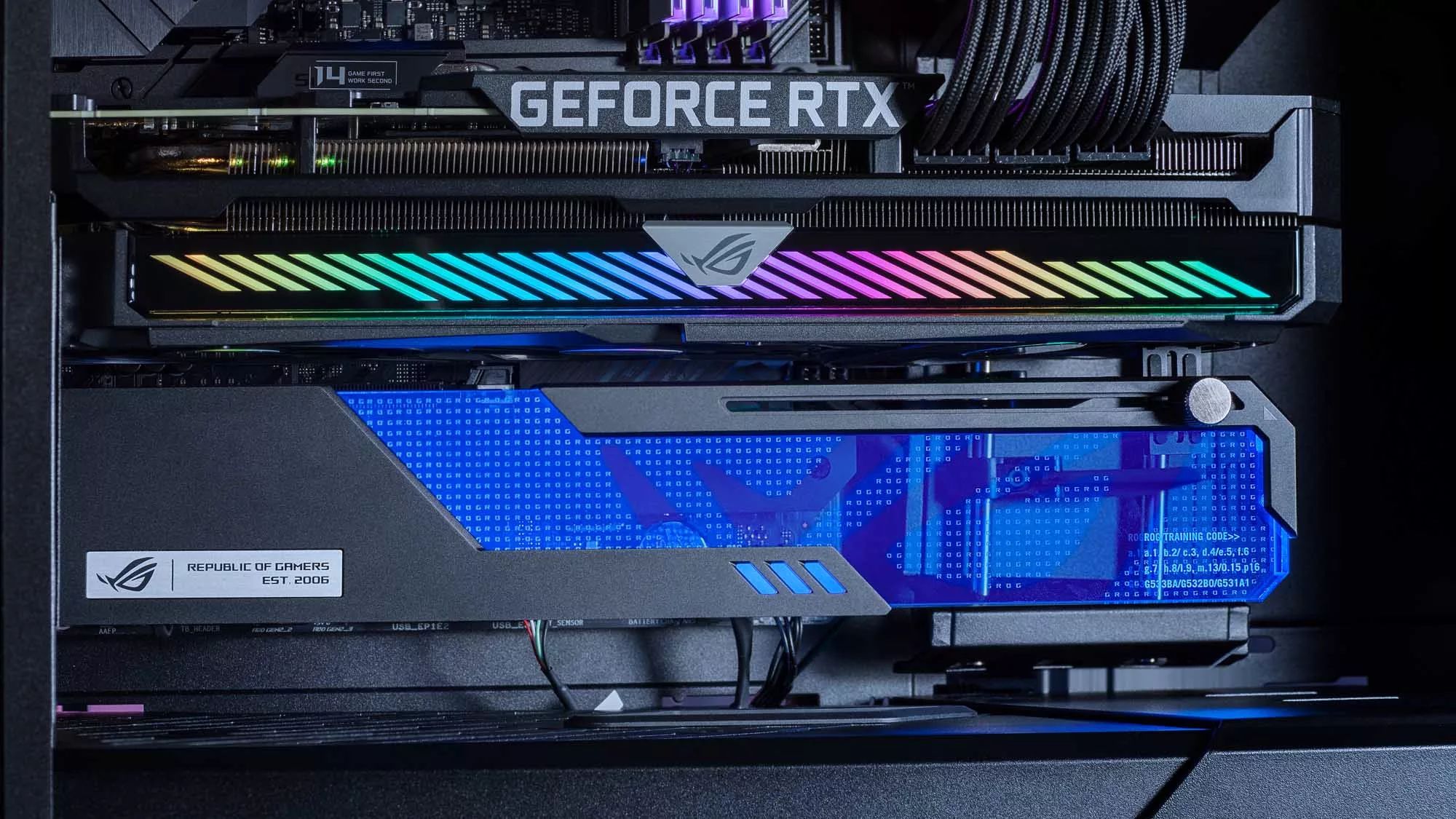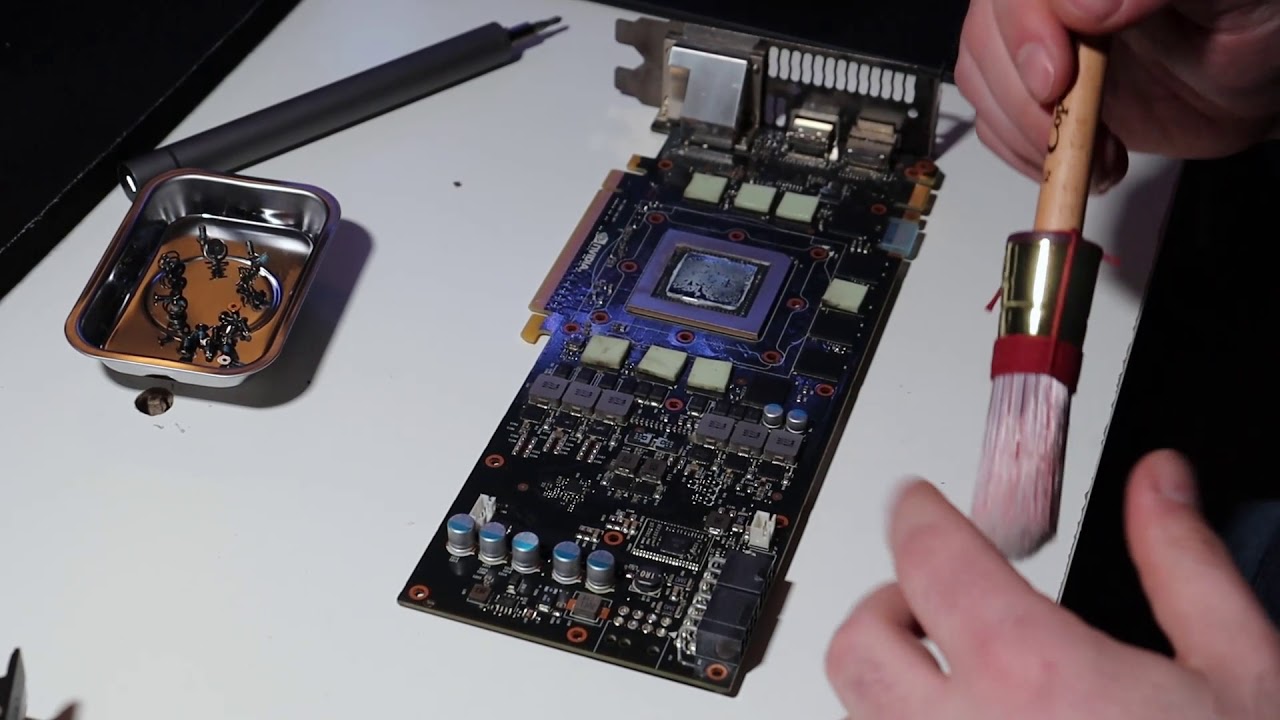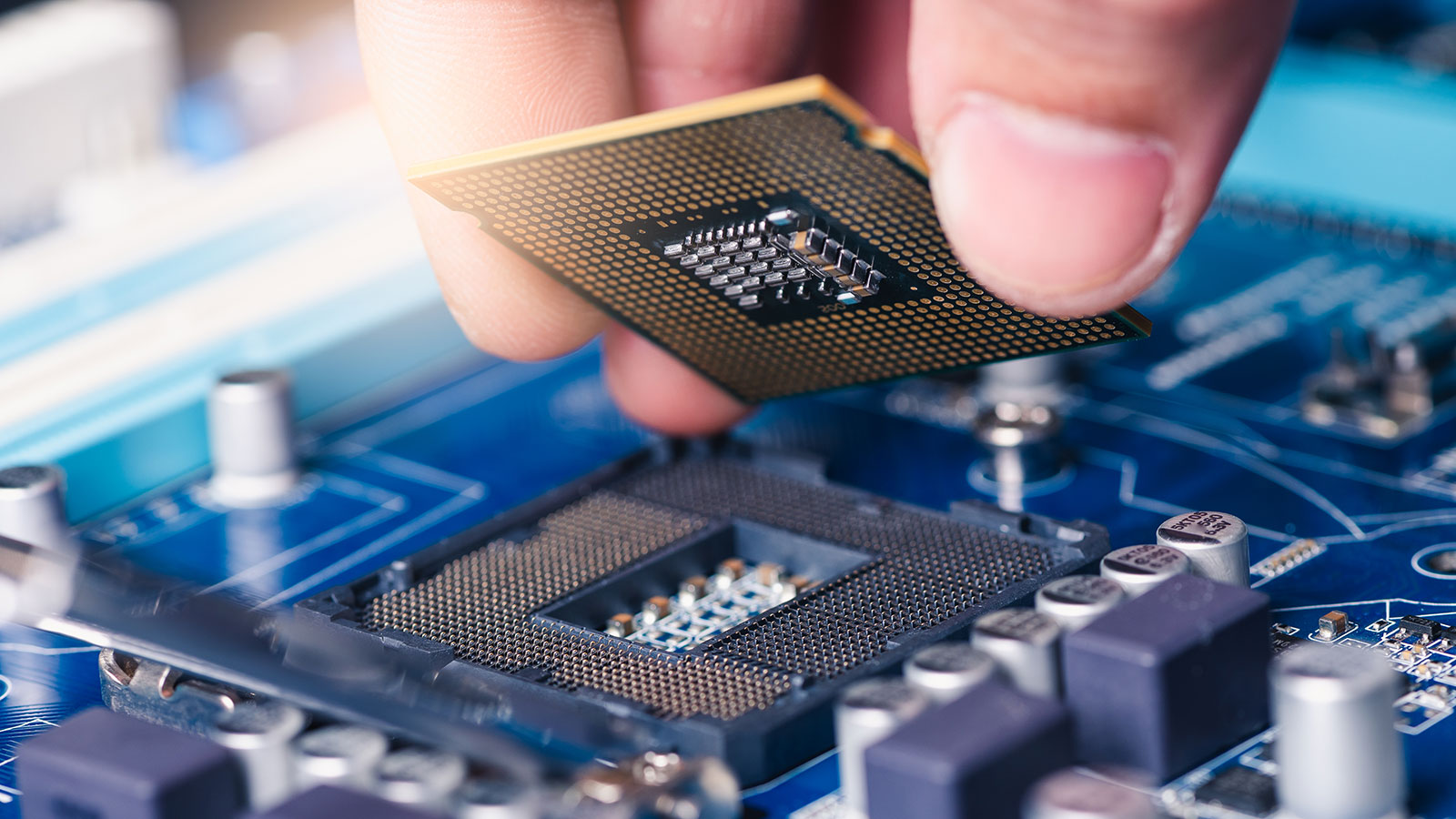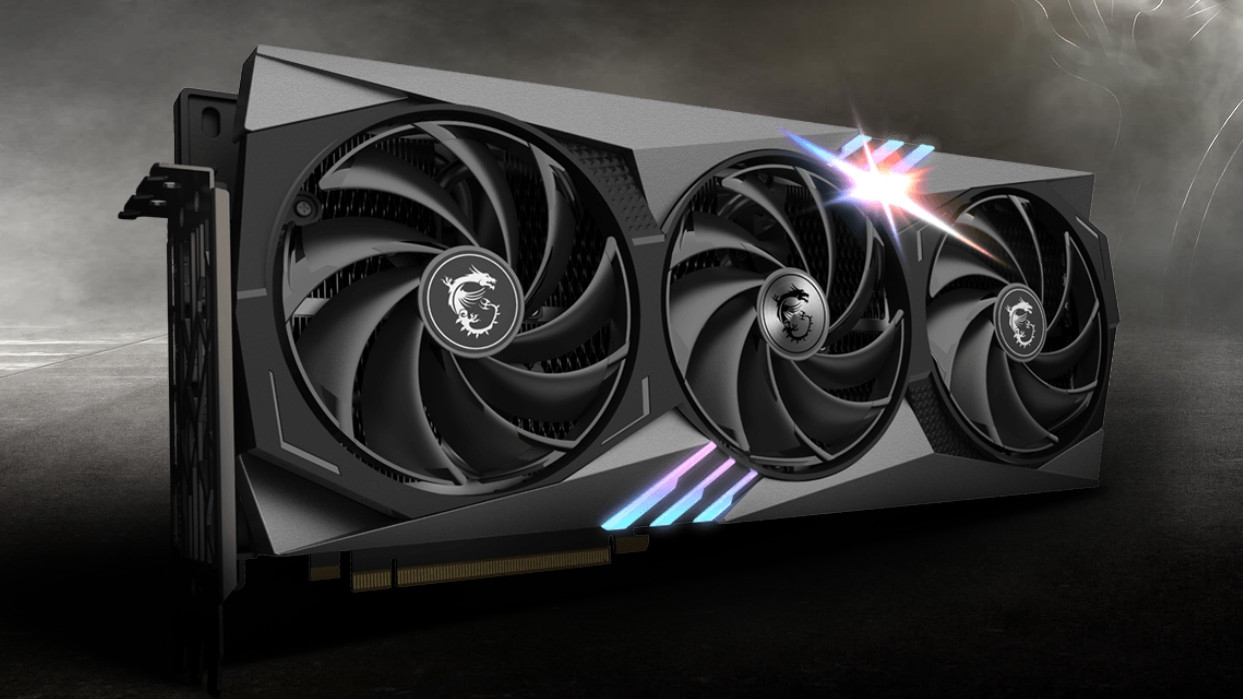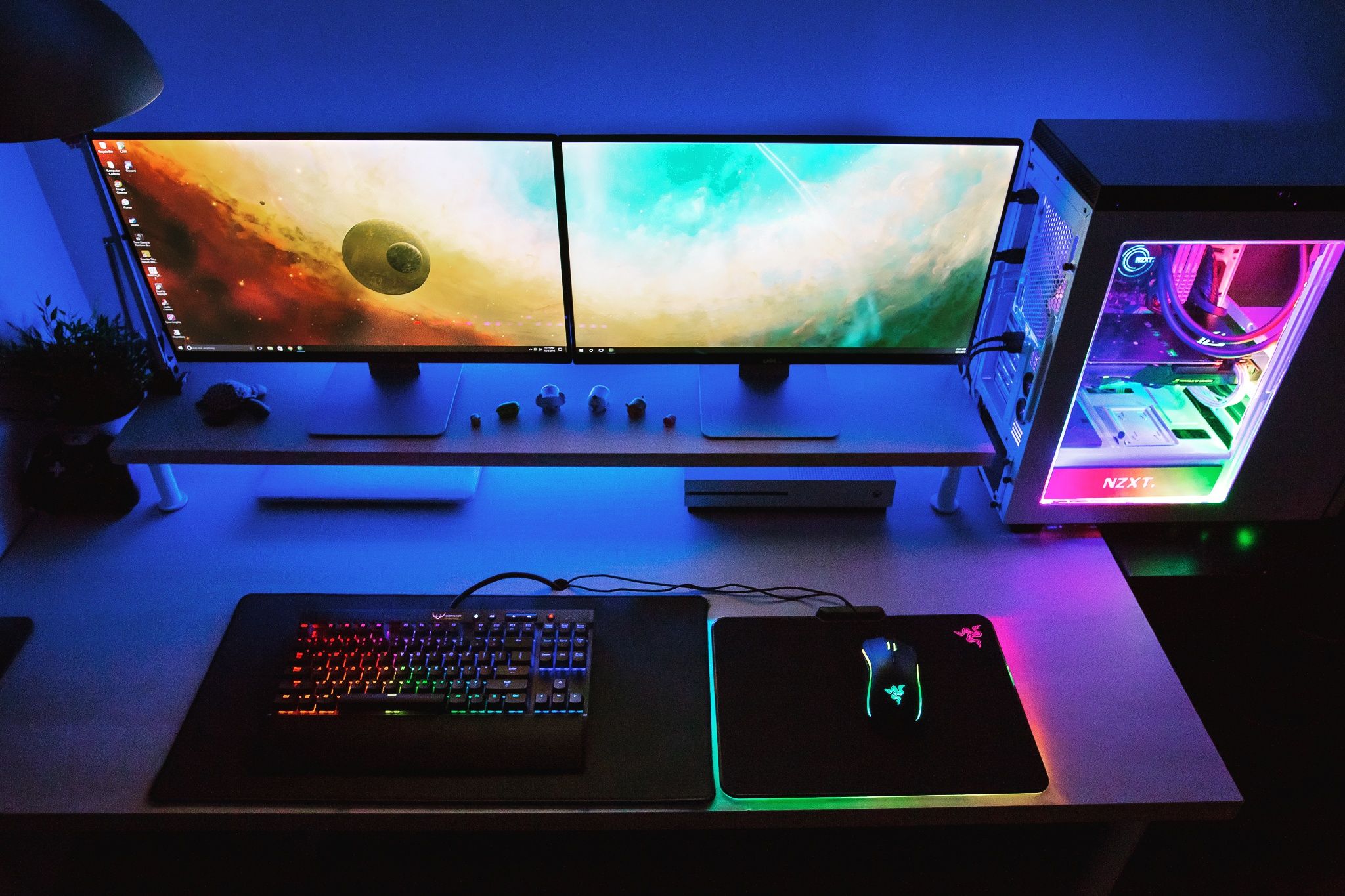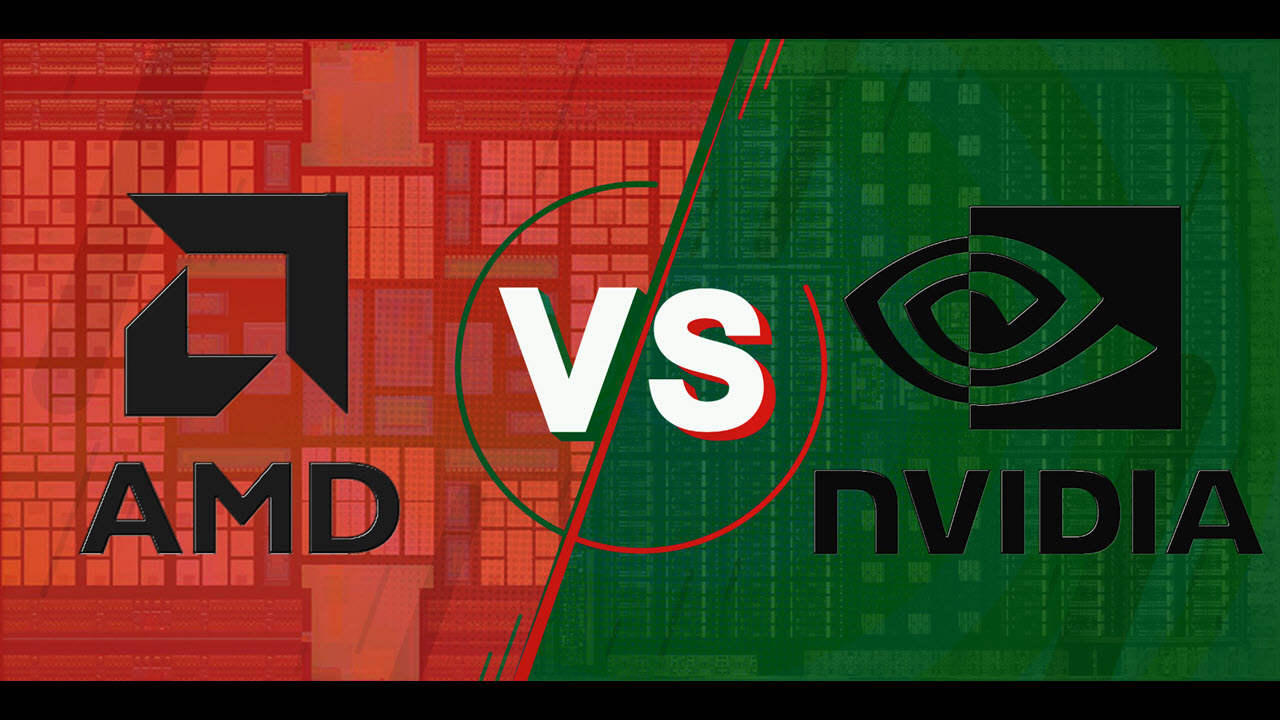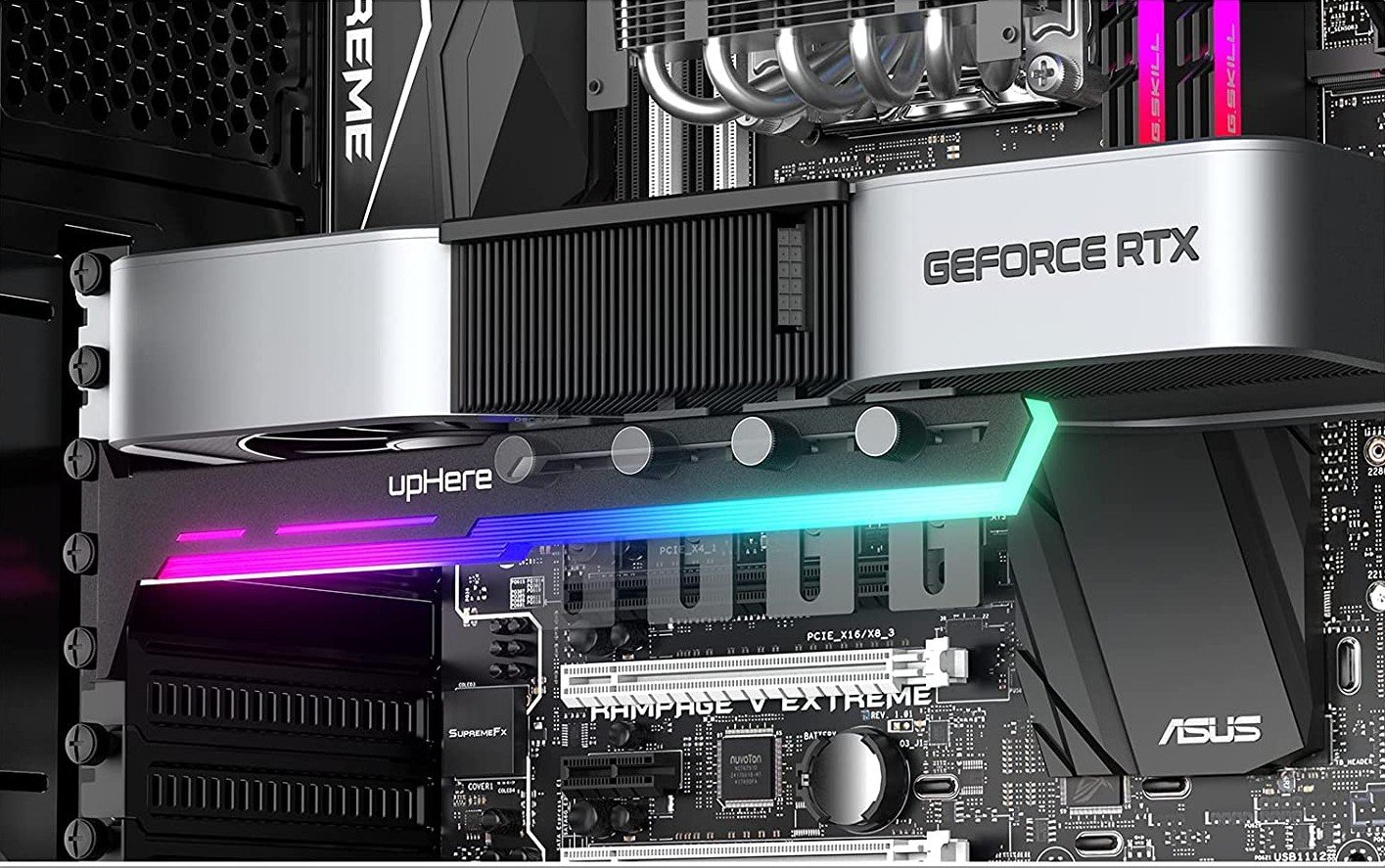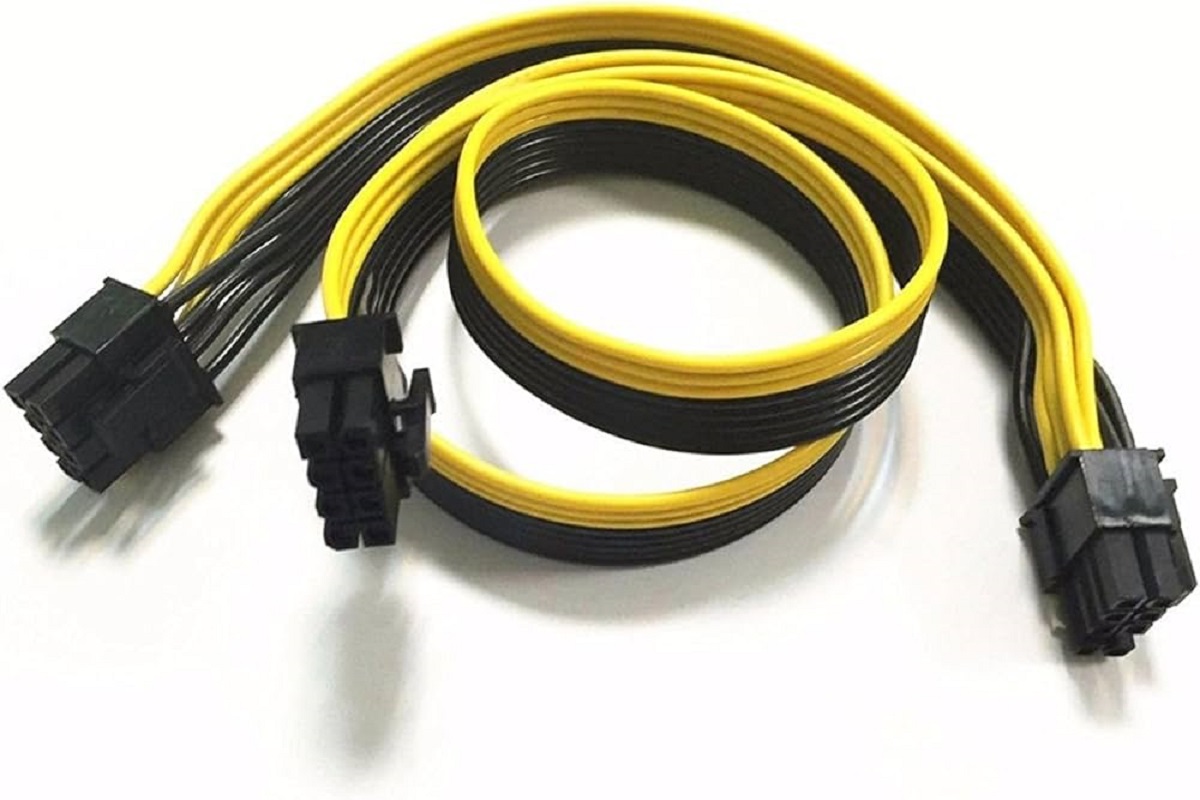Introduction
Welcome to the world of computer hardware! If you’ve ever wondered where the graphics processing unit (GPU) is located in your computer, you’ve come to the right place. The GPU plays a crucial role in rendering graphics, whether it’s for gaming, graphic design, or video editing. In this article, we will explore the location of the GPU in both desktop computers and laptops, as well as the importance of this component in delivering high-quality visuals.
A GPU, also known as a graphics card or video card, is the specialized hardware responsible for handling the complex calculations required to render images, animations, and videos on a display. It works in conjunction with the computer’s central processing unit (CPU) to process and display graphics efficiently and accurately.
Nowadays, with the increasing demand for realistic 3D graphics and high-definition video content, the role of the GPU has become even more critical. It has evolved into a powerful processing unit capable of handling massive amounts of data and performing complex calculations, making it an indispensable component in modern computing.
Understanding where the GPU is located in your computer is essential for troubleshooting, upgrading, or customizing your system. Let’s dive into the details of GPU placement in desktop computers and laptops, and explore the different types of GPUs you may encounter.
What is a GPU?
A GPU, short for Graphics Processing Unit, is a specialized electronic circuit that is designed to rapidly manipulate and alter memory to accelerate the creation of images for output to a display device. Unlike the CPU (Central Processing Unit), which is a general-purpose processor responsible for executing instructions and performing tasks across a wide range of applications, the GPU is designed specifically for handling complex calculations required in graphics rendering.
The main function of a GPU is to process and render graphical data, including images, videos, and 3D graphics. It takes the workload off the CPU and handles the specialized tasks required for displaying visuals. By offloading these graphics-intensive operations to the GPU, the overall performance of the system is enhanced, resulting in smoother and more responsive visual experiences.
GPUs are composed of thousands of smaller processing units, known as cores. These cores work in parallel to perform calculations simultaneously, allowing the GPU to handle multiple tasks efficiently. This parallel processing capability is especially useful for applications that involve complex computations, such as gaming, video editing, and scientific simulations.
Over the years, GPUs have evolved significantly in terms of processing power and capabilities. Modern GPUs are equipped with dedicated memory, high-speed buses, and advanced technologies, such as shader cores and tensor cores, to further enhance their performance. They have become an integral component in gaming consoles, high-end workstations, and even artificial intelligence applications.
In addition to their role in graphics rendering, GPUs are also used for general-purpose computing tasks, a concept known as General-Purpose GPU computing (GPGPU). This involves harnessing the parallel processing power of GPUs to accelerate tasks such as data analysis, machine learning, and scientific computations.
With the continuous advancements in graphics technology, GPUs are constantly improving, providing more power and efficiency for handling complex graphical tasks. Whether it’s for gaming, content creation, or scientific research, a powerful GPU is crucial for achieving high-quality visuals and optimal performance.
Importance of a GPU in a Computer
The GPU is a key component in modern computer systems and its importance cannot be overstated. Here are a few reasons why the GPU is crucial in delivering exceptional visual performance:
- Graphics Rendering: One of the primary functions of a GPU is graphics rendering. Whether you’re playing a video game, watching a high-definition movie, or editing photos, the GPU is responsible for rendering the images on your display. It handles complex calculations, such as shading, texturing, and lighting, to produce realistic and visually appealing graphics.
- Gaming Performance: For avid gamers, the GPU is an essential component. It determines the graphics quality, frame rate, and overall smoothness of gameplay. A powerful GPU with a high number of cores and dedicated memory can handle the demands of modern games and deliver a seamless gaming experience.
- Video Editing and Content Creation: If you work with video editing software or engage in content creation, a robust GPU is vital. It accelerates the rendering and encoding processes, enabling faster preview and export times. This helps improve productivity and reduces the time required for rendering complex video effects or visual enhancements.
- 3D Modeling and Design: In the field of 3D modeling and design, the GPU plays a crucial role. Complex 3D models require extensive calculations for rendering, lighting, and material effects. A powerful GPU can handle these computations efficiently, allowing for smoother navigation, real-time visualization, and quicker rendering times.
- Artificial Intelligence and Machine Learning: GPUs are also heavily utilized in artificial intelligence (AI) and machine learning applications. Training deep neural networks and performing complex computational tasks in AI require massive parallel processing capabilities. GPUs excel in these scenarios due to their ability to simultaneously execute thousands of computations, significantly accelerating the training process.
In summary, the GPU is not only responsible for delivering visually stunning graphics and gaming experiences, but it also plays a vital role in various professional and scientific fields. Its parallel processing power and specialized architecture make it an indispensable component for any computer system that requires high-performance graphics, visualization, and computational capabilities.
Location of the GPU in Desktop Computers
In desktop computers, the GPU is typically located on the computer’s motherboard or graphics card. Here are the two main locations where you can find the GPU in desktop computers:
- Integrated Graphics: Many desktop computers come with integrated graphics, where the GPU is integrated into the motherboard. In this case, the GPU is typically located near the CPU, as it shares resources and memory with the CPU. Integrated graphics are sufficient for everyday tasks such as web browsing, office work, and multimedia playback, but they may not have the power to handle graphics-intensive applications like gaming or video editing.
- Graphics Card: For users who require more powerful graphics performance, a dedicated graphics card is installed in one of the expansion slots on the motherboard. These expansion slots, such as PCI Express (PCIe) slots, provide a dedicated interface for the graphics card to be inserted. The GPU on the graphics card is usually located in a large rectangular or square-shaped component called the graphics processing unit (GPU) itself. The card will have ports on the back for connecting the display, such as HDMI, DisplayPort, or DVI.
The location of the GPU on the graphics card may vary depending on the card’s design. It can be either on the front (side facing the computer case) or on the back (side facing away from the case). Some high-end graphics cards may also feature multiple GPUs, offering even more processing power for demanding applications.
It’s important to note that if you’re using a dedicated graphics card, your computer system will use the GPU on the graphics card rather than the integrated graphics. This can be advantageous for tasks that require high-performance graphics, such as gaming or graphic design, as the dedicated GPU can significantly enhance the overall visual experience and performance.
If you’re unsure about the location of the GPU in your desktop computer, you can consult the computer’s user manual or check the specifications of your graphics card to find out where it is physically located. Additionally, modern operating systems like Windows and macOS provide tools and settings to identify and manage the GPU in your system.
Location of the GPU in Laptops
In laptops, the GPU is typically integrated into the motherboard or included as a separate component. Due to the space constraints and compact design of laptops, the location of the GPU may vary. Here are the two main locations where you can find the GPU in laptops:
- Integrated Graphics: Many laptops come with integrated graphics, where the GPU is part of the CPU or integrated into the motherboard. In this case, the GPU shares the system memory and resources with the CPU. The location of the GPU in laptops with integrated graphics is usually near the CPU and other important components. Integrated graphics are suitable for everyday tasks and light multimedia use, but they may not have the power to handle graphics-intensive applications.
- Discrete Graphics Card: Some laptops, especially gaming or high-performance laptops, come with a dedicated graphics card. These laptops feature a separate graphics card with its own GPU and dedicated memory. The location of the GPU in laptops with discrete graphics cards varies depending on the laptop’s design. In some laptops, the graphics card is located beneath a panel that can be accessed and upgraded, while in others, it is soldered directly onto the motherboard.
It’s important to note that laptops with discrete graphics cards offer better graphics performance compared to laptops with integrated graphics. The dedicated GPU provides more power and dedicated memory for handling graphics-intensive applications such as gaming, video editing, and 3D rendering.
If you’re unsure about the location of the GPU in your laptop, you can check the laptop’s user manual or specifications to find out if it has integrated graphics or a discrete graphics card. Additionally, you can use system information tools or GPU monitoring software to identify the GPU in your laptop.
Upgrading the GPU in a laptop can be challenging and is not always possible. Unlike desktop computers, laptops are generally not designed to be easily upgraded, especially when it comes to replacing or upgrading the GPU. Therefore, if you require more powerful graphics performance, it is important to consider the GPU specifications before purchasing a laptop.
Integrated vs. Dedicated GPUs
When it comes to GPUs, there are two main types: integrated and dedicated. Let’s explore the differences between these two types:
- Integrated GPUs: Integrated GPUs are built into the computer’s processor or motherboard. They share system memory with the CPU and rely on the CPU’s processing power. Integrated GPUs are commonly found in entry-level and mid-range computers, including laptops and desktops. They are designed to handle basic graphics tasks, such as web browsing, office applications, and multimedia playback. While integrated GPUs have improved in recent years, they typically lack the power and dedicated memory required for demanding 3D gaming or professional graphics work.
- Dedicated GPUs: Dedicated GPUs, also known as discrete GPUs, are separate components that are specifically designed for graphics processing. They have their own dedicated memory and focus solely on handling graphics-related tasks. Dedicated GPUs are commonly found in high-end gaming computers, workstations, and specialized graphics-intensive systems. These GPUs are more powerful and capable of handling complex graphics calculations, allowing for smooth gameplay, faster video rendering, and improved performance in graphics-intensive applications.
There are several advantages and considerations associated with each type of GPU:
Performance: Dedicated GPUs offer better performance and are essential for applications that require extensive graphics processing, such as high-end gaming, video editing, and professional 3D modeling. Integrated GPUs, on the other hand, are sufficient for basic graphics tasks, but may struggle with demanding applications.
Power Consumption: Integrated GPUs are generally more power-efficient than dedicated GPUs, as they are designed to work in synergy with the CPU. This can translate to longer battery life in laptops with integrated graphics. Dedicated GPUs, due to their higher power requirements, consume more energy and may also generate more heat.
Upgradability: Integrated GPUs cannot be upgraded or replaced since they are integrated into the processor or motherboard. On the other hand, dedicated GPUs can often be upgraded or replaced in desktop computers, allowing users to improve graphics performance without changing the entire system.
Cost: Integrated GPUs are cost-effective as they are included in the computer’s processor or motherboard. Dedicated GPUs, especially high-performance ones, can be more expensive due to their advanced technology and dedicated memory.
Usage: The choice between integrated and dedicated GPUs depends on your usage requirements. If you primarily use your computer for everyday tasks and light multimedia use, integrated graphics may suffice. However, for gaming, video editing, graphic design, or any graphics-intensive work, a dedicated GPU is highly recommended to ensure optimal performance.
In summary, integrated GPUs are suitable for basic graphics tasks, while dedicated GPUs are essential for demanding applications that require high-performance graphics processing. Understanding the differences between integrated and dedicated GPUs will help you choose the right type of GPU based on your specific needs and budget.
Expansion Slots and GPU Installation
When it comes to desktop computers, installing a dedicated graphics card usually involves utilizing expansion slots on the motherboard. These slots provide a dedicated interface to connect the graphics card and enable it to communicate with other components of the computer system. Here’s a closer look at expansion slots and the process of GPU installation:
Expansion Slots: The most common type of expansion slot used for graphics cards is the PCI Express (PCIe) slot. PCIe slots come in various sizes, with PCIe x16 being the most commonly used for graphics cards. These slots have notches and connectors that align with the graphics card to ensure a secure and proper connection.
GPU Installation: Here’s a step-by-step guide on installing a graphics card:
- Prepare the Computer: Before installation, make sure your computer is powered off and unplugged. Open the computer case and locate the available PCIe slot(s). Remove any cover or bracket that may be covering the slot.
- Handle the Graphics Card: Gently handle the graphics card by its edges, avoiding touching the gold contacts or any components. Carefully align the notches and connectors on the graphics card with the PCIe slot, and insert it into the slot. Apply gentle pressure until the card is fully seated.
- Secure the Graphics Card: Once the graphics card is inserted into the PCIe slot, secure it in place using the screw or latch provided. This ensures that the card remains firmly attached to the motherboard without any movement.
- Connect Power: Some high-performance graphics cards require additional power connections. Locate the appropriate power connectors on the graphics card and connect the corresponding cables from the power supply unit (PSU) to the card. Make sure the connections are secure.
- Close the Computer Case: Check all connections and cables to ensure they are properly connected. Close the computer case and secure it with the screws or latches. Plug in the power cable and turn on the computer.
- Install GPU Drivers: After booting up the computer, install the appropriate drivers for your graphics card. These drivers enable the computer to communicate with the graphics card and unlock its full potential. Visit the manufacturer’s website or use the included driver installation disc to install the latest drivers.
It’s important to note that the process of GPU installation may vary depending on the specific computer model or graphics card manufacturer. Always consult the user manual or manufacturer’s instructions for detailed guidance on how to correctly install a graphics card in your specific system.
Additionally, if you’re unsure about installing a graphics card yourself, it is recommended to seek professional assistance or consult a computer technician to ensure proper installation and avoid damaging any components.
Troubleshooting GPU Issues
While GPUs are designed to work reliably, issues can arise from time to time. Here are some common GPU issues and troubleshooting steps to help resolve them:
- Display Issues: If you’re experiencing a blank screen, flickering, or distorted graphics on your monitor, it may indicate a problem with the GPU. Start by checking the display cables for loose connections. Try connecting the monitor to a different port on the GPU. If the issue persists, update or reinstall the GPU drivers. If all else fails, it could indicate a faulty GPU that may require repair or replacement.
- Overheating: GPUs can generate a significant amount of heat, especially during intense gaming or graphics-intensive tasks. If your GPU is overheating, it can lead to performance issues or system instability. Ensure that your computer’s cooling system, including fans or liquid cooling, is working properly. Clean any dust or debris that may be obstructing the airflow. Consider installing additional cooling solutions, such as aftermarket GPU coolers or case fans. If the overheating persists, it may be necessary to adjust the GPU’s fan curve or apply new thermal paste.
- Artifacts or Visual Glitches: Artifacts, such as random pixels, lines, or color distortions on the screen, can indicate a problem with the GPU. This issue can occur due to faulty VRAM (Video Random Access Memory) or GPU overclocking. First, check if the GPU is overclocked and revert it back to its default settings. If the issue continues, test the GPU in another system or try a different graphics card in your system to determine if the problem lies with the GPU itself. If the issue persists, consider contacting the manufacturer for further assistance.
- System Crashes or Freezes: If your computer consistently crashes or freezes during GPU-intensive tasks, it may suggest a stability issue with the GPU. Update the GPU drivers to the latest version and ensure that your operating system is up to date. Consider adjusting the GPU’s power settings or undervolting if you suspect it is drawing too much power. If the problem persists, it could indicate a faulty GPU or compatibility issue with other hardware components.
- Driver Issues: Outdated or incompatible GPU drivers can cause various issues. Regularly check for driver updates from the GPU manufacturer’s website and install them accordingly. If encountering problems after updating drivers, use tools to completely uninstall the drivers and perform a clean installation. It is also worth trying older drivers if the issues started occurring after a recent driver update.
If you’ve attempted troubleshooting steps yourself but are still experiencing persistent GPU issues, it may be necessary to seek professional help. Contacting the GPU manufacturer’s support or consulting a knowledgeable technician can provide further assistance in diagnosing and resolving the problem.
Conclusion
The GPU is an integral component in modern computer systems, responsible for handling complex graphics calculations and delivering high-quality visuals. Whether it’s for gaming, video editing, or 3D modeling, a powerful GPU is essential for achieving optimal performance and immersive experiences.
In desktop computers, the GPU can be found either integrated into the motherboard or as a dedicated graphics card inserted into expansion slots. Integrated graphics are suitable for everyday tasks, while dedicated graphics cards offer superior performance for graphics-intensive applications.
In laptops, the GPU may be integrated into the motherboard or included as a discrete graphics card. Laptops with dedicated GPUs provide better graphics performance, making them ideal for gaming and professional work, but upgrading or replacing the GPU in a laptop can be challenging.
Understanding the different types of GPUs and their respective locations in computers is crucial for troubleshooting, upgrading, or customizing your system. It allows you to harness the power of the GPU to enhance your computing experience.
Additionally, troubleshooting common GPU issues, such as display problems, overheating, artifacts, system crashes, and driver issues, can help ensure a smooth and stable operation of your GPU. Performing basic troubleshooting steps, updating drivers, and maintaining proper cooling can help resolve many GPU-related problems.
In conclusion, the GPU plays a vital role in delivering exceptional graphics performance and visual experiences. Whether you’re a gamer, content creator, or professional user, understanding the GPU’s location, importance, and troubleshooting techniques will help you make the most of this critical hardware component.







